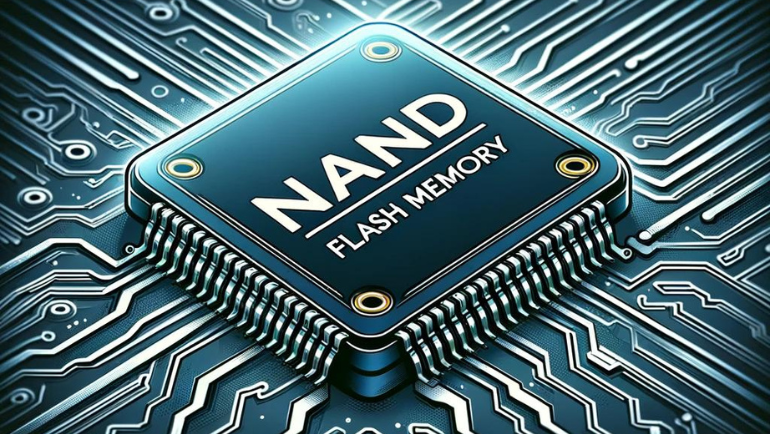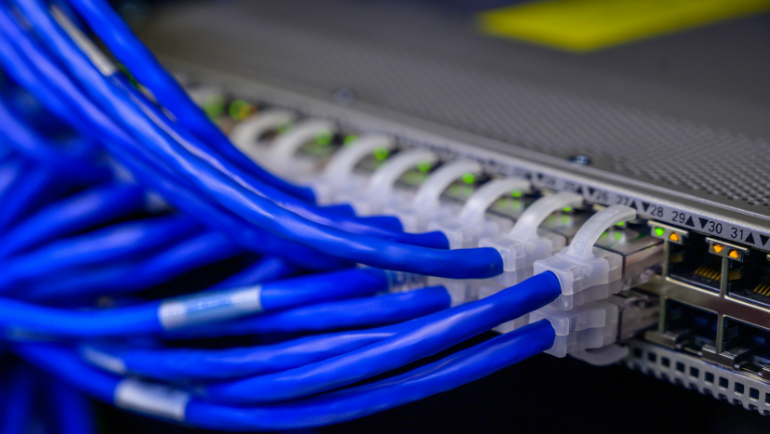
In a world where data storage plays a vital role, enterprises use NAND flash memory for fast storage solutions to enhance system efficiency. These memories have surpassed their predecessors – magnetic disks – in terms of speed, form factor, durability & more. Today, NAND flash memory is an integral part of electronic devices in most industries including automotive, communication, & big data industries. Let’s deep dive & understand the basics of NAND flash memory, its types, features & more.
What is NAND Flash Memory

NAND flash memory is a non-volatile storage device that can retain data without power, similar to microSD cards. Two major types of flash memory NAND & NOR vary based on size, performance & cost. The goal behind the development of NAND flash memory is to compete with magnetic drives by offering higher storage capacity at faster speeds. It introduced similar interfaces as Magnetic drives like SAS and SATA in 3.5-inch, but also updated the technology and introduced M.2 NVMe and M.2 SATA drives.
NAND flash chip saves data into blocks & relies on electric circuits to store data in 0s or 1s through the transistor or cells. The memory in NAND flash can only be accessed serially as the cells are arranged in series and some NAND drives support hardware and software-based AES encyptions.
Working of NAND Flash Memory
When a high voltage is applied to the control gate, electrons accumulate on the floating gate which is represented by a logical 0 or 1. Each memory cell in NAND flash consists of a floating gate, a control gate & a channel connecting them both. Both these gates control the flow of data and during the reprogramming of a cell, a surge of voltage is again sent to the control gate to repeat the process.
Types of NAND Flash Memory

A variety of NAND flash memories are available on the market today in various form factors for enterprise or business applications. Solid State Drives (SSDs), microSD cards, or USB Flash Drives are some famous storage devices used extensively in enterprises today. The following section will highlight the NAND flash memory types briefly.
RAW NAND
Many types of RAW NAND are available on many SSDs & USB flash drives, impacting their speed, durability & performance.
- SLC: It refers to Single Level Cell (SLC) and stores 1 bit of data per cell. SLC is famous for its fast performance in industrial applications.
- MLC: Provides a balance between performance and capacity by storing 2 bits of data per cell. MLC is mostly used in consumer-based electronic devices such as laptops, PCs & more.
- TLC: Triple Level Cell (TLC) as the name suggests stores 3 bits of data per cell for higher storage capacity.
- QLC: Offers NVMe level performance & delivers terabytes cost that sometimes beats Hard Disk Drives (HDDs). Quad Level Cell (QLC) have better storage capacities but are prone to more errors.
- 3D NAND: Vertically stacked cells to increase data storage density without increasing the material cost. 3D NAND or V-NAND comes in MLC, TLC and QLC technology, except for SLC, providing an increase in performance, endurance & more
Managed NAND
Manage NAND is used in electronic devices such as small Integrated Circuits (ICs), SD cards, and CompactFlash cards for faster data transfer speed. Let’s look into some types of managed NAND used in electronic devices as an IC briefly.
- e.MMC Memory: Embedded Multi-Media Card (e.MMC) is most commonly used in mobile phones & portable devices for data storage & transfer
- eMCP: Provides integrated NAND flash memory & RAM in a single chip, referred to as Embedded Multi-Chip Package (eMCP)
- uMCP: For a compact & efficient device design Unified Multi-Chip Package (uMCP) is used for combining multiple memory & units, optimizing board space
- Embedded USB Storage: Allows data transfer & storage without the need for an external USB drive for seamless connectivity & data access
- Universal Flash Storage (UFS): High-speed flash memory for electronic devices & IoT applications. It offers lower latency, power consumption, increase in transfer rate compared to other flash ICs
Main Features of NAND Flash Memory
The features of NAND flash memory give them an edge over buying storage devices like magnetic HDDs. Here is a list of features that highlight the importance of different NAND flash memory types in today’s world.
- Non-Volatile Memory: Retains the stored data without electric power, allowing retention of data for a longer time without damage.
- Reprogrammable: All NAND flash memory is reprogrammable through which enterprises can frequently use it for various requirements.
- Faster Write and Erase Time: Provides faster write & erase speeds, especially useful in enterprises where permanent writing is more crucial than data retrieving.
- More Storage: NAND flash drives come in various capacities ranging from 8 GBs to 2 TBs in USB flash drives, while 250 GBs to 30 TBs in SSDs & more.
- Low Manufacturing Cost: The production cost of some NAND flash memories is much more cost-effective than other storage solutions, making them the most sought-after product.
Strengths & Weakness of NAND Flash Memory
NAND flash technology has revolutionized the world of digital storage, but as with any other technology, it has its strengths & weaknesses as mentioned below:
| Strength | Weakness |
| Cost: High storage capacities with lower cost per byte | Endurance: NAND cell wears out as it reaches to write-cycle limit |
| Replaceability: Most NAND flash memories are easily replaceable | Replacement cost: Some embedded NAND flash cost a significant amount of money for replacement |
| Performance: Faster than magnetic storage solutions like HDDs | Architecture: Dense cells, slow down speed and negatively affect other cells |
| Power consumption: Uses less electricity & produce less heat | Durability: Heavy write loads cause read disturbance degrading the drive quicker |
Applications of NAND Flash Memory
NAND flash technology offers faster processing speeds, performance & better reliability in critical-mission systems. Many NAND flash types reduce the motherboard size in smartphones, tablets & other electronic devices, enabling more compact designs. NAND flash technology made it possible to use Opal 2.0 SEDs in enterprises for hardware-level encryption at fast speeds without bottlenecks.
The ability to implement RAID configuration into NAND flash drives via Raid controllers makes it useful in many enterprise applications. The pre-defined set of features for both consumer & industrial applications such as IoT, and big data among others makes them a sought-after product.
FAQs
What Does NAND Flash Stand For?
NAND is a logic gate that stands for NOT-AND, while the ‘flash’ refers to the non-volatile storage technology.
What Is NAND Flash Used For?
NAND flash is used for general storage in devices like USB flash drives, SSDs, SDcards & more, some products are as follows:
You can request free bulk quotes for the required number of drives.
All aforementioned types & features make NAND flash memory a reliable storage option in the market today. However, selecting anyone requires a more detailed understanding of each type of NAND flash memory. For example, NAND flash SSD comes with various interfaces such as NVMe or SAS and has a major impact on speed & system performance. This marks the end of NAND flash memory. Enterprises also combine DRAM and NAND memories in their system to boost performance. Moreover, you can also employ both HDD and SSD drives in servers to combine faster speeds and cost-effective storage. That said, consider all the facts about SSDs to take full benefits from your investment and prevent read disturbance.
For more information on technology, stay connected with the Computing Worlds blog.






